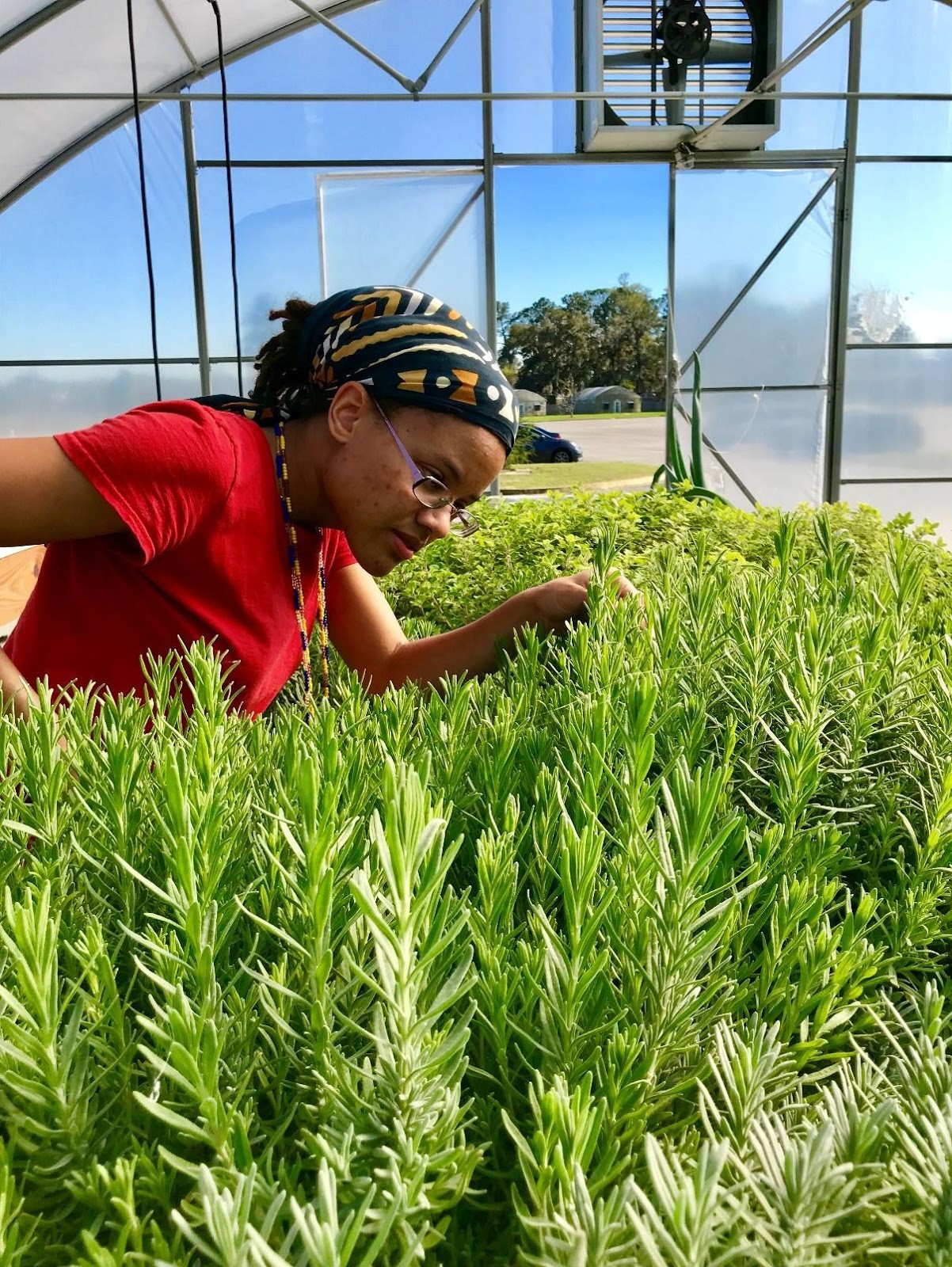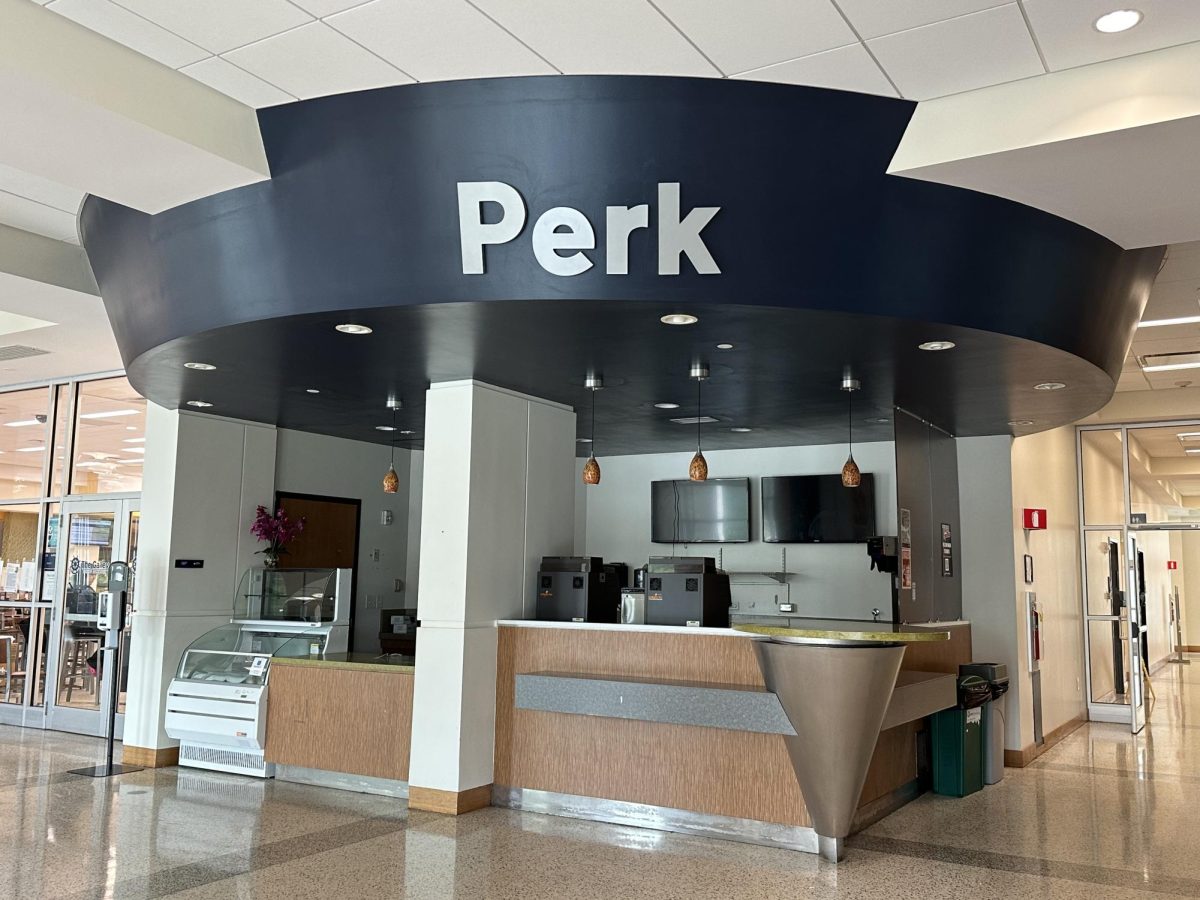By Sarah Dryden, Staff Writer

Last Friday, the Foram Sustainable Aquaponic Research Center at Armstrong State University (or SARC) kicked off the month of March with its open house event. With freshly poured gravel, and large open doors, the SARC community invited students, faculty, and Savannah residents to come explore the facility, learn about the system, and even purchase vegetables and herbs straight out of the grow beds.
Amongst the attendees were the Department Head of Math and Science, representatives from Georgia Southern University, SARC Curator and Assistant Curator, and undergrad student researchers.
Curator, Dr. Heather Joesting, guided tours throughout the greenhouse, explaining the historical relevance and challenges of aquaculture fish farming– a process of water-based farming that is dependent on the fertilization of fish, originally practiced on the Nile River, from which aquaponic practices are derived.
“Aquaculture fish farming is challenging because of water change…in some areas water is a scarce or limited resource…fertilizer runoff can be toxic.”
Joesting explained by combining aquaculture and hydroponic farming techniques they have created an aquaponic facility. “In an aquaponic system the fish fertilize the plants and the plants clean up the water. This combo doesn’t require fertilizer, soil, or water change.” The only added nutrients required are fish food and chelated iron.
Despite its efficiency and lack of waste, aquaponic farming does present challenges. Because SARC produce is organic and all run off from plants filters back into the fish tank, controlling pests and fungal pathogens can be difficult. According to Joesting, even organic soaps can be toxic to the tilapia. Attempting to eliminate pests like aphids and white flies, they purchased 4,500 lady bugs and planted chives which have grown so long they hang over the edges of the grow beds.
“We want the fish and the plants to get big enough to harvest as fast as you can,” Assistant Curator Ashley Marranzino stated as she efficiently chopped handfuls of the chives and placed them into a plastic container for a customer. Various methods are used to test water temperatures, record the weather, and monitor plant and fish growth rates to improve their system.
Aquaponics for Students
Members of SARC include students working 1 hour per week, volunteers, and paid researchers, dedicated to performing aquaponic research to create a more sustainable and profitable system. Undergrads Sakile, who majors in Cellular Molecular Biology, and Chris, majoring in Marine Biology, are paid student researchers.
“This is a good opportunity for student research, science, and the student scholarship symposium presentations,” stated Sakile, who has been doing research for SARC since last summer.
“If you are interested and want to work, then show up…it’s a program worth supporting.”
Once the tilapia began spawning, Chris was recruited to build a smaller transition tank for the offspring to measure the plant growth for comparison to growth rates of the other four larger systems.
Chris believes the main value of SARC is the experience he has gained while working. “The driving point is the resume booster. You can do your own research for Grad school and gain experience in the scientific process with a hands-off intervention process. You live, and you learn.”
Upcoming News for SARC
- After a year of research and labor, SARC is permitted to sell vegetables and herb, and will also be harvesting their tilapia. Both can be purchased online through the Armstrong Marketplace and picked up weekly. 100 percent of all profits made by sales and donations go into funding for research.
- According to Assistant Curator, Ashley Marranzino, they hope to introduce crayfish to their system this year.
- SARC offers guided tours of the 4,100 square foot greenhouse to students upon request.







